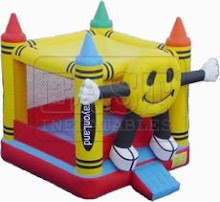Nov 1 (Reuters) - U.S. President Barack Obama's advisers appear to be laying the ground for a hybrid war strategy combining both counterinsurgency with counterterrorism in Afghanistan that would entail a troop increase next year.
Officials say Obama has ruled out wholesale Inflatable Products a troop reduction and will, at a minimum, need to send large numbers of military trainers to Afghanistan if he hopes to accelerate the expansion of the Afghan army, a top priority for his Democratic allies in Congress.
The biggest question, officials say, are how many more troops and trainers Obama will decide to deploy.
STRATEGY
Support within the administration is growing for continuing a counterinsurgency strategy with a greater focus on protecting major Afghan population centers.
Counterinsurgency child inflatable advocates include Defense Secretary Robert Gates and military leaders, including General Stanley McChrystal, commander of U.S. and NATO forces in Afghanistan.
Officials said this strategy could be combined with a stepped up counterterrorism campaign, advocated by Vice President Joe Biden, using unmanned aerial drones and special operations forces to combat Taliban and al Qaeda fighters in the Afghan countryside and near the border with Pakistan.
TROOPS
McChrystal has recommended deploying an additional 40,000 troops next year, a figure that includes trainers.
Another option, and one that may be more politically palatable for Obama and his allies, would add about 10,000 to 15,000 troops, a large portion of whom would be dedicated to training.
U.S. intelligence agencies believe the Taliban-led insurgency includes an estimated 25,000 full-time fighters, up from 7,000 in 2006.
That would suggest that international troops currently outnumber insurgents 4-to-1. The Afghan army has about 100,000 troops.
But officials said Obama may opt for a number in between 15,000 and 40,000.
Military commanders and lawmakers have said discussions were focused on sending two additional brigades, totaling between 10,000 to 15,000 troops, to southern Afghanistan, a key Taliban stronghold.
Another brigade also may be added in eastern Afghanistan near the border with Pakistan.
Brigades range in size but generally include 3,500 to 4,000 troops. They can swell to over 5,000 troops if other units are attached to them. Marine brigades can be larger.
Currently, there are about 67,000 U.S. troops and 42,000 allied forces in Afghanistan.
TALIBAN
A U.S. troop increase could give Western forces a greater numerical advantage, provided Taliban growth slows. But U.S. officials and experts said such comparisons were suspect in guerrilla warfare since the Taliban mainly operate in small units using hit-and-run tactics. (Reporting by Adam Entous; Editing by Sue Pleming and Bill Trott)
2009年11月1日星期日
订阅:
博文评论 (Atom)

没有评论:
发表评论